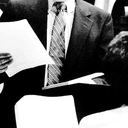
In a failure of transparency one legislative leader described as “unfathomable,” the State of Texas put Quintin Jones (pictured) to death on May 19, 2021 without any media witnesses present to observe the execution. It was the first time in the 571 executions conducted by Texas since the U.S. Supreme Court upheld its death penalty statute in 1976 that no media witnesses were present.
Texas Department of Criminal Justice (TDCJ) Director of Communications Jeremy Desel blamed the snafu on “miscommunication” by inexperienced execution team members who failed to notify prison officials to bring media witnesses into the viewing area. “We have a number of new personnel that are a part of the execution team who have not been a part of an execution in the past,” he said. “As a result of a miscommunication between officials at the Texas Department of Criminal Justice, there was never a call made to the summon the media witnesses into the unit. We apologize for this critical error. The agency is investigating to determine exactly what occurred to ensure it does not happen again.”
The agency’s action raised renewed concerns about botched executions and execution secrecy. Rep. Jeff Leach (R – Plano), a co-chair of the Texas House Criminal Justice Reform Caucus, tweeted, “There needs to be an immediate investigation in to what happened, why it happened and who is responsible. It was ‘a mistake’ and/or ‘a miscommunication’ is not acceptable. This is an unfathomable, colossal screw-up and we need answers.”
Texas law authorizes five media witnesses to observe each execution, specifying that at least one each must be reporters for the Associated Press and the Huntsville Item. Reporters for both media outlets were present at the prison waiting to witness the execution, including AP reporter Michael Graczyk, who has witnessed more than 400 Texas executions. Prison officials never made the call to bring the reporters to the viewing room adjacent to the execution chamber and they were still in a waiting area when they learned the execution had already been carried out.
Associated Press coverage of the incident highlighted the importance of media witnesses in revealing problems with executions, saying, “The AP aims to cover every execution in the U.S. and has for decades. In recent years, reporters have been able to witness and tell the public about botched or problematic executions in Alabama, Arizona, Oklahoma and Ohio, where inmates could be seen gasping for breath for long periods of time or writhing and clenching their teeth while on the gurney.”
“Letting media witnesses in to see an execution isn’t hard,” Death Penalty Information Center Executive Director Robert Dunham said in a statement. “[I]f the state with the most experience in executing prisoners lacks the competence to carry out this most basic execution function, what does that tell us about what else in the execution process states and the federal government can’t be trusted to perform properly?”
Rep. Joe Moody (D – El Paso), the other co-chair of criminal justice reform caucus, told the Texas Tribune, “Nothing the government does should happen in the dark, least of all something as grave as the taking of a life. I’ve always said that human error — whether it’s on the street or in a court or at the death chamber itself — is one of the main reasons the state should never be involved in killing a human being.”
Joseph Larsen, a board member of the Freedom of Information Foundation of Texas, echoed Rep. Leach’s criticism of the execution, calling the exclusion of media witnesses “inexcusable.” “It is not different from requiring that the trial of the person charged be public and witnessed,” he said. “Texas officials would like to restrict media access to the extent (most) possible, mostly for political reasons.”
Dunham also emphasized the necessity of media witnesses for ensuring transparency and the legitimacy of the execution process. “That Texas apparently cares so little about transparency that it ‘forgot’ to let the media in — and then no one on the execution team inside the witnessing rooms noticed that the media witnesses weren’t there — exhibits a stunning disregard for public accountability,” he said. “Texas’s failure last night is destined to become a poster child for the lack of transparency and accountability in the U.S. execution process. It symbolizes why the public continues to lose faith in states’ trustworthiness to properly conduct executions.”
Jones’ execution was the first by any U.S. state in more than 10 months, ending the longest period without a state execution in more than forty years. The last state execution was on July 8, 2020, when Texas executed Billy Joe Wardlow.
Jones’ execution had already attracted nationwide attention, both because it marked the resumption of state executions, which had largely been on hold during the COVID-19 pandemic, and because the victim’s family had requested clemency. A Change.org petition asking Governor Greg Abbott to grant clemency to Jones had garnered more than 150,000 signatures. His case highlighted racial disparities in the clemency process. In 2018, David Dow, the attorney for death-row prisoner Christopher Young, who also was denied clemency, noted that family members of the murder victim had asked the pardons board to commute the death sentence imposed on the person convicted of murdering their loved one six times this century. “[O]f those six,” Dow said, “three are black, two are Hispanic and one is white. Only in the case of the white guy [Thomas Whitaker] did they vote to recommend commutation.” Jones became the fourth Black prisoner denied clemency despite the support of the victim’s family.
Joseph Brown, Texas resumes executions after 10-month halt, The Huntsville Item, May 19, 2021; Juan Lozano, Experts Raise Concerns After Texas Execution Without Media, Associated Press, May 20, 2021; Jolie McCullough, For the first time in more than 40 years, media were not allowed to witness a Texas execution, Texas Tribune, May 20, 2021; Kim Bellware, Texas fails to allow media to witness an execution for first time in 40 years, blaming miscommunication, Washington Post, May 20, 2021; Edgar Sandoval, Texas’ First Execution in Nearly a Year Had No Reporters Present, New York Times, May 20, 2021; Rep. Jeff Leach, Twitter, May 20, 2021 — “It was ‘a mistake’ and/or ‘a miscommunication’ is not acceptable. This is an unfathomable, colossal screw-up and we need answers.”
Read the Statement by Death Penalty Information Center Executive Director Robert Dunham Concerning the Exclusion of Media Witnesses from Observing the May 19, 2021, Execution of Quintin Jones in Texas



